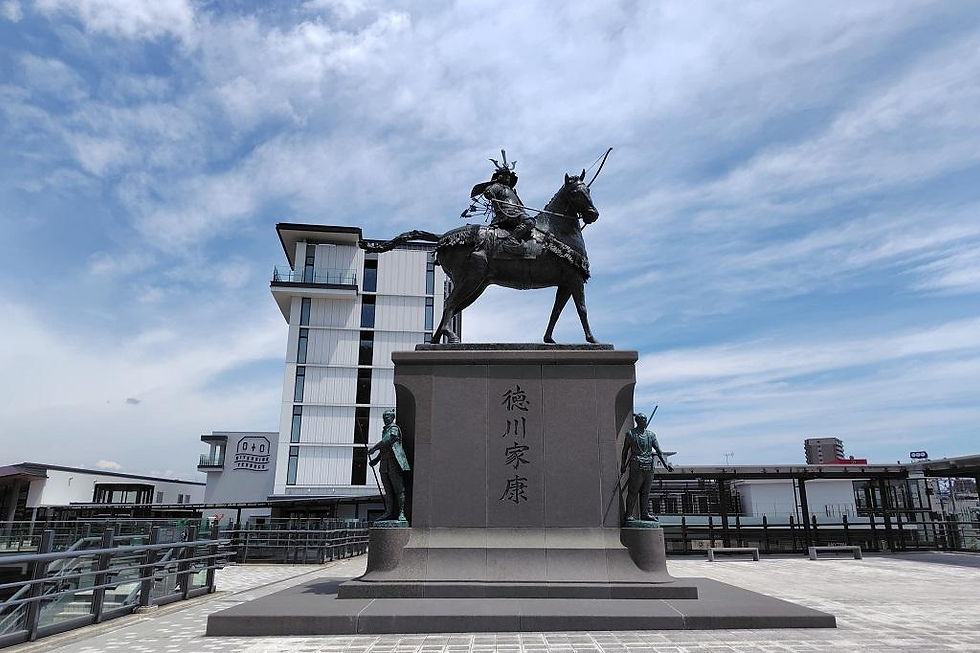A brief history of Japan to accompany the Guide
- Tony Boccia
- Mar 28
- 3 min read
Most of the locations on the website have a brief history on their page; however there's so much detail for Japan that it didn't quite work. Here's the brief synopsis on Japan for you to use while clicking the various links on Pacific History Guide.
The traditional history of Japan stretches back 38,000 years, although the first written mention of Japan occurs in Han China in the 1st Century CE. Japan's written history really begins in the period between the 4th and 9th centuries, when the country coalesced around an Emperor and began to organize itself into provinces.
In broad strokes, the history of Japan can be classified as Ancient, Classical, Feudal, Early Modern, and Modern. During the Classical period, Japan's traditions, myths, and foundation stories were established and later periods looked back to this time to reinvigorate Japanese culture. The Feudal period is mostly remembered by the way it ended, with the three great unifiers of Japan - Oda Nobunaga, Toyotomi Hideyoshi, and Tokugawa Ieyasu - settling the wars that had torn the country apart for more nearly 150 years; today known as the Sengoku, or warring states period.
Ieyasu founded the Tokugawa Shogunate, which ruled Japan from 1603 to 1868. We now call this the Edo period as Ieyasu moved the capital from Kyoto, where it had been for over 1,000 years, to Edo, his seat of power further north. This period is marked by the Sakoku policy, which closed Japan to foreign influence. Only small numbers of traders were allowed in Japan, and they were largely restricted to Nagasaki, specifically Dejima Island.
The arrival of U.S. Navy Admiral Matthew Perry's ships off Tokyo Bay in 1854 started a period of unrest in Japan as the country struggled to come to terms with the modernization happening outside, and the actions of great powers in mainland Asia. Eventually Japan was forced to sign unequal treaties with the great powers and the Tokugawa Shogunate fell, replaced with a Constitutional Monarchy in a period of civil war now called the Meiji Restoration, in which the Emperor Mutsuhito was given both his traditional powers as well as full political powers. He moved his Imperial Throne to Edo, renamed it Tokyo, and it has remained there ever since.
Japan in the modern age completely reinvented itself, with a constitution, powerful armed forces, and economic power. Looking to Korea and mainland Asia, Japan fought and won the First Sino-Japanese War in 1894-5, took part in the Boxer Rebellion of 1900, and won a stunning victory in the Russo-Japanese War of 1904-5. At the end of all this, Japan had annexed Korea, taken Taiwan as a colony, conquered and settled a sizable part of Manchuria, and after the First World War, had a foothold in China at Tsingtao and all of Germany's former possessions in the Pacific Ocean.
Having a monopoly on East Asia over the other regional powers, a hunger for more territory, and a need for raw materials to fuel growth all informed Japan's entry into the Second World War. Although Japan's conduct in the war can be characterized as poor in terms of Army and Navy communication, military conduct, and the strategy of combined arms, their shocking victories over the Allies in December 1941, culminating with the fall of Singapore and the Philippines in 1942, are just as valuable in study as the losses later in the war.
The war took many millions of civilian lives in Japan, not only in the two nuclear bombings but during the strategic bombing campaign; this has not been forgotten in Japan and never should be. Following the war, Japan was rebuilt by the Allies, and used both as a test-bed for economic strategies and a democratic bulwark against the rise of communism in Asia. The post-war constitution, signed in 1947, renounced war for all time; the deteriorating situation on the Korean Peninsula a few years later saw Japanese factories making tanks and guns for the Allied nations at almost the same rate as the war years.
I’ll leave it there for now. There is so much to see and do in Japan, no matter where you may be stationed or visiting. I recommend getting off the beaten path - dig into the books and resources listed here, and use the technology we’re fortunate to have to translate where there’s no English present. Enjoy!





Comments